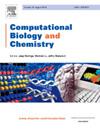e-QSAR (Explainable AI-QSAR), molecular docking, and ADMET analysis of structurally diverse GSK3-beta modulators to identify concealed modulatory features vindicated by X-ray
IF 2.6
4区 生物学
Q2 BIOLOGY
引用次数: 0
Abstract
Glycogen Synthase Kinase-3 beta (GSK-3β) is a crucial enzyme linked to various cellular processes, including neurodegeneration, autophagy, and diabetes. A structurally diverse set of 1293 molecules having GSK-3β modulatory activity has been used. Molecular docking and eXplainable Artificial Intelligence (XAI) have been used concomitantly. The approach involves using GA for feature selection and XGBoost for in-depth analysis, yielding strong statistical validation with R2tr = 0.9075, R2L10 %O = 0.9116, and Q2F3 = 0.7841. Molecular docking provided complementary and similar results. Machine learning model interpretation using SHapley Additive exPlanations (SHAP) revealed that specific structural features like aromatic carbon with specific partial charges, non-ring nitrogen atoms, sp3-hybrid carbon atoms, and the topological distance between carbon and nitrogen atoms, among others, significantly influence the modulatory profile. The results are also supported by reported X-ray resolved structures. In addition, in-silico ADMET analysis is also accomplished. This research underscores the value of advanced machine learning techniques in understanding complex biological phenomena and supporting rational drug design.
e-QSAR (explable AI-QSAR),分子对接和ADMET分析结构多样的gsk3 - β调节剂,以识别被x射线证实的隐藏调制特征。
糖原合成酶激酶-3β (GSK-3β)是一种与多种细胞过程相关的关键酶,包括神经变性、自噬和糖尿病。使用了1293个具有GSK-3β调节活性的结构多样的分子。分子对接和可解释人工智能(XAI)已被广泛应用。该方法包括使用GA进行特征选择,使用XGBoost进行深入分析,得到R2tr = 0.9075,R2L10 %O = 0.9116,Q2F3 = 0.7841的强统计验证。分子对接提供了互补和相似的结果。使用SHapley加性解释(SHAP)的机器学习模型解释揭示了特定的结构特征,如具有特定部分电荷的芳香碳、非环氮原子、sp3杂化碳原子以及碳和氮原子之间的拓扑距离等,显著影响了调节谱。结果也得到了报道的x射线分解结构的支持。此外,还完成了硅ADMET分析。这项研究强调了先进的机器学习技术在理解复杂生物现象和支持合理药物设计方面的价值。
本文章由计算机程序翻译,如有差异,请以英文原文为准。
求助全文
约1分钟内获得全文
求助全文
来源期刊

Computational Biology and Chemistry
生物-计算机:跨学科应用
CiteScore
6.10
自引率
3.20%
发文量
142
审稿时长
24 days
期刊介绍:
Computational Biology and Chemistry publishes original research papers and review articles in all areas of computational life sciences. High quality research contributions with a major computational component in the areas of nucleic acid and protein sequence research, molecular evolution, molecular genetics (functional genomics and proteomics), theory and practice of either biology-specific or chemical-biology-specific modeling, and structural biology of nucleic acids and proteins are particularly welcome. Exceptionally high quality research work in bioinformatics, systems biology, ecology, computational pharmacology, metabolism, biomedical engineering, epidemiology, and statistical genetics will also be considered.
Given their inherent uncertainty, protein modeling and molecular docking studies should be thoroughly validated. In the absence of experimental results for validation, the use of molecular dynamics simulations along with detailed free energy calculations, for example, should be used as complementary techniques to support the major conclusions. Submissions of premature modeling exercises without additional biological insights will not be considered.
Review articles will generally be commissioned by the editors and should not be submitted to the journal without explicit invitation. However prospective authors are welcome to send a brief (one to three pages) synopsis, which will be evaluated by the editors.
 求助内容:
求助内容: 应助结果提醒方式:
应助结果提醒方式:


